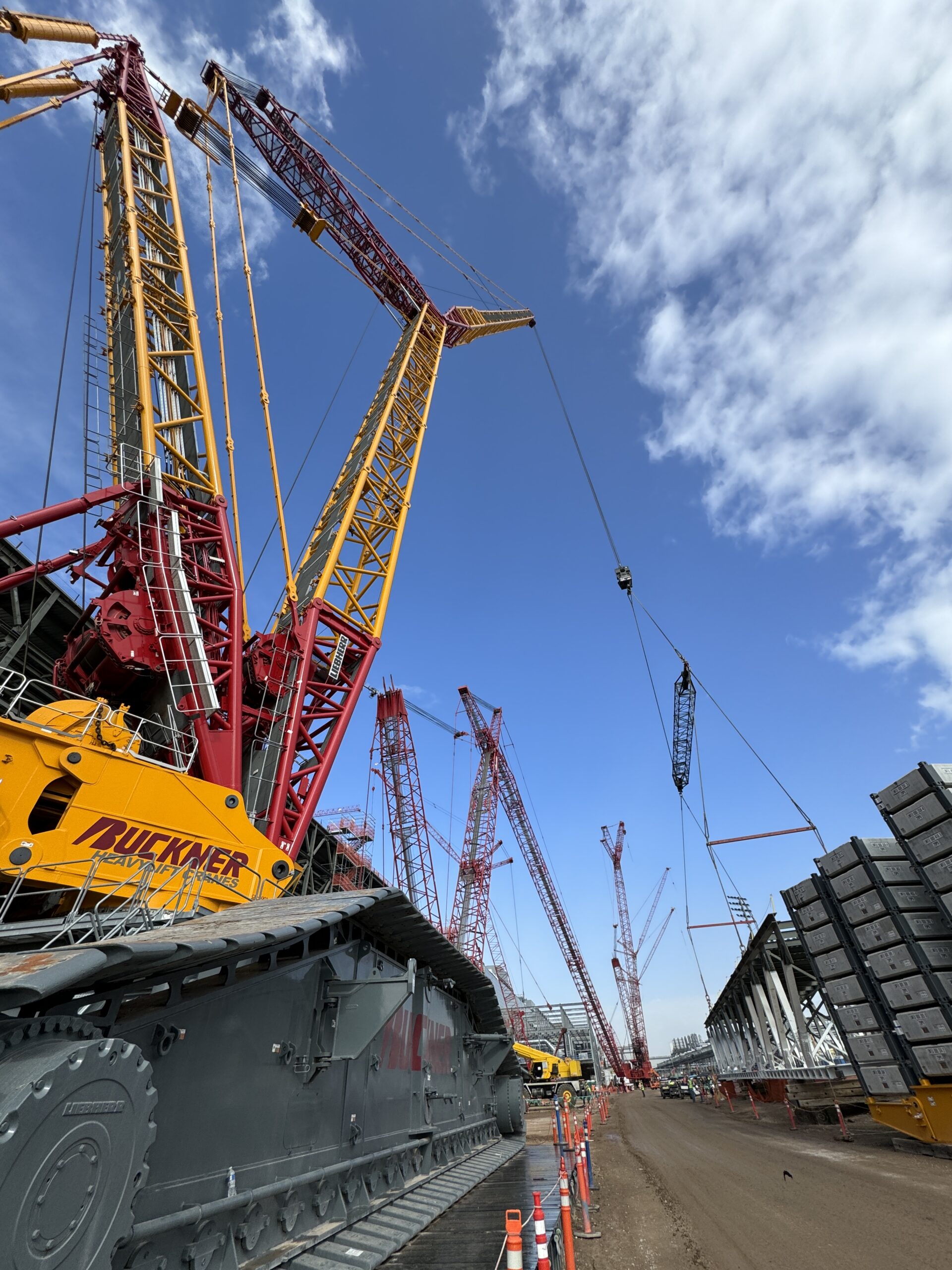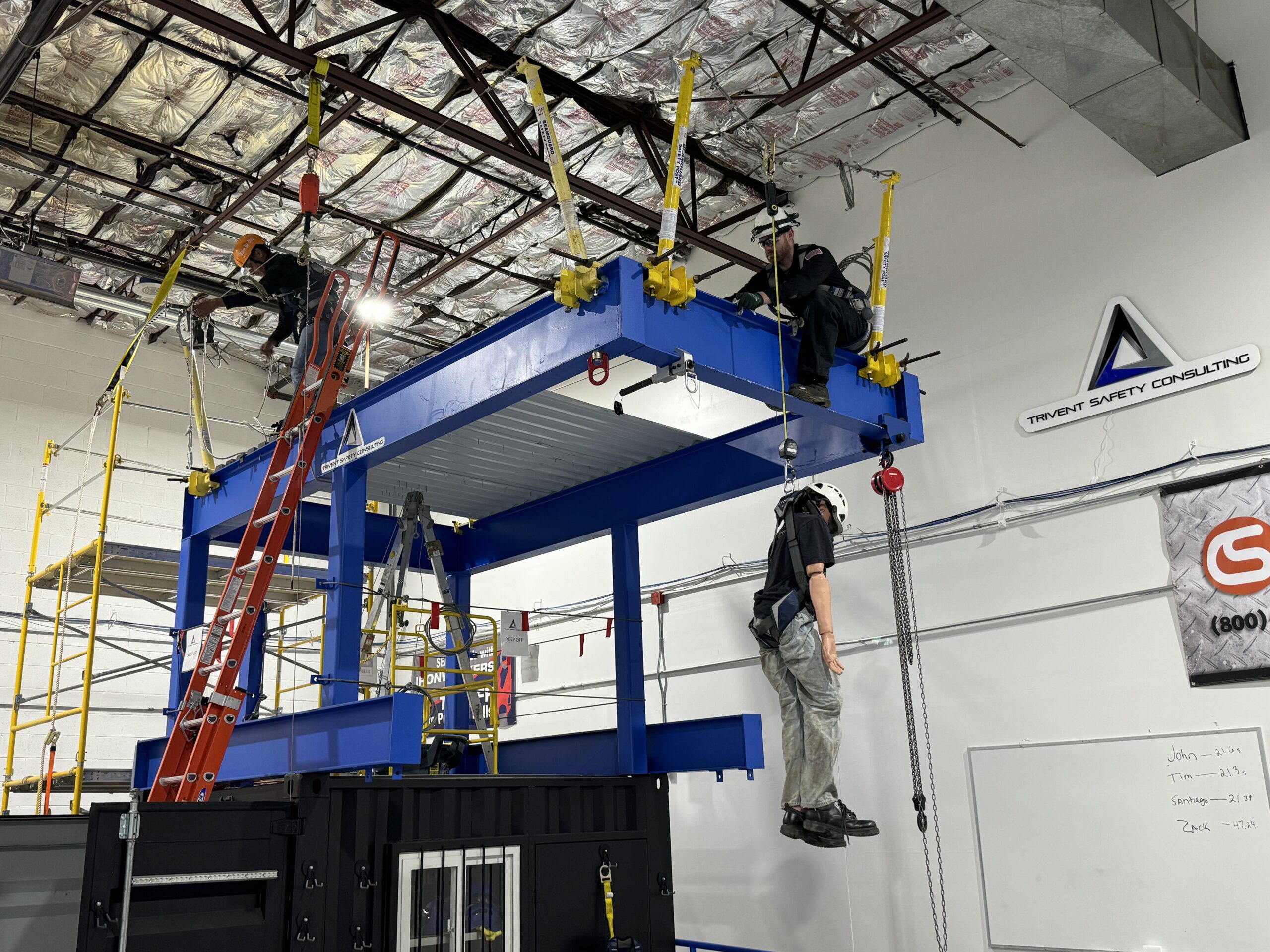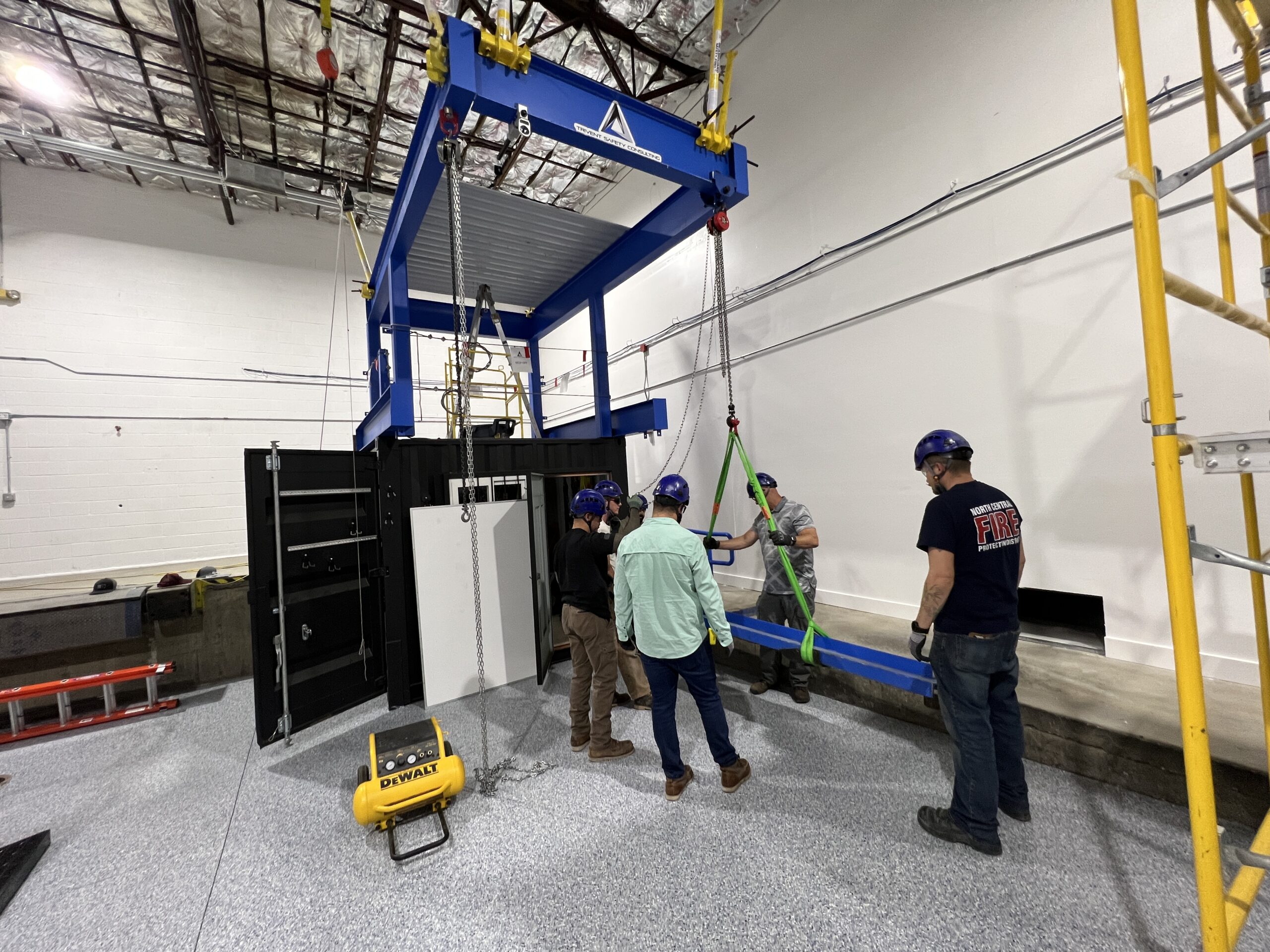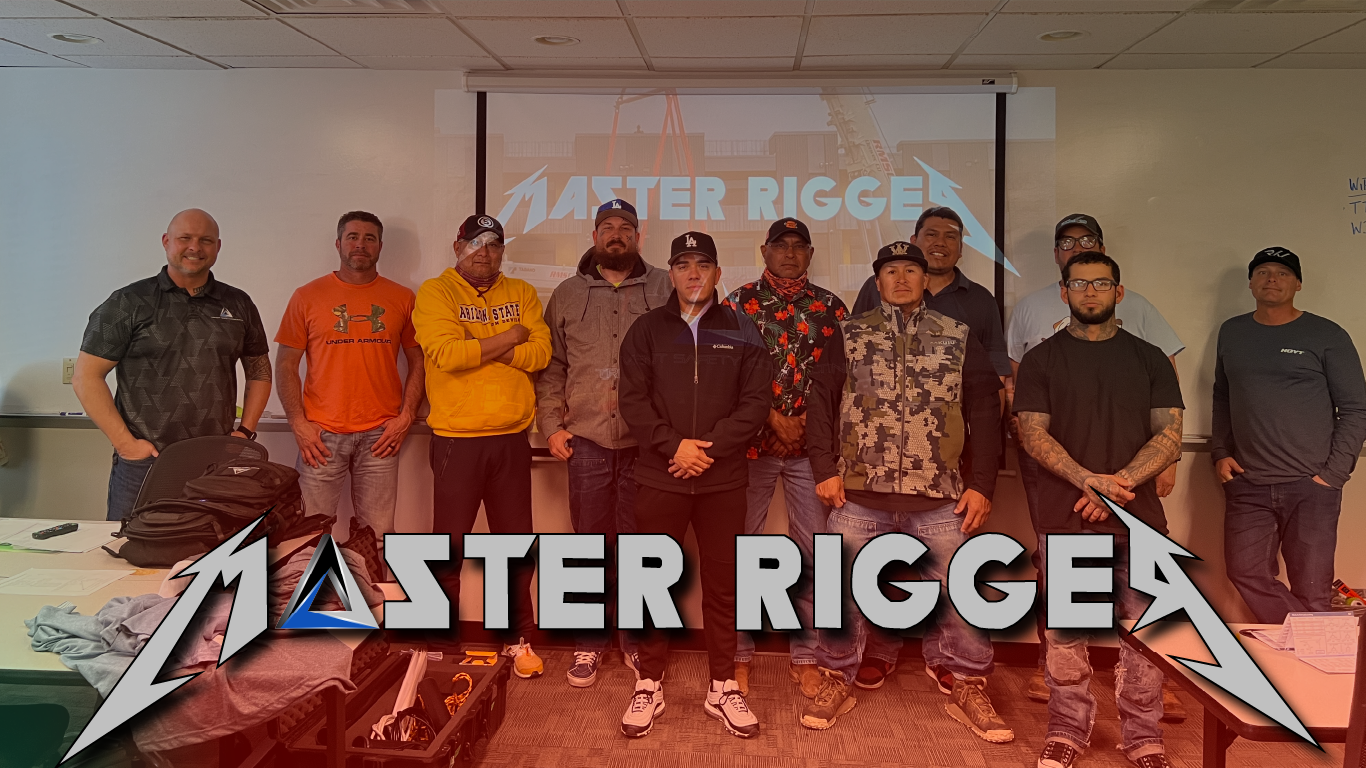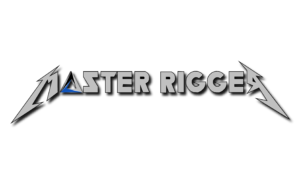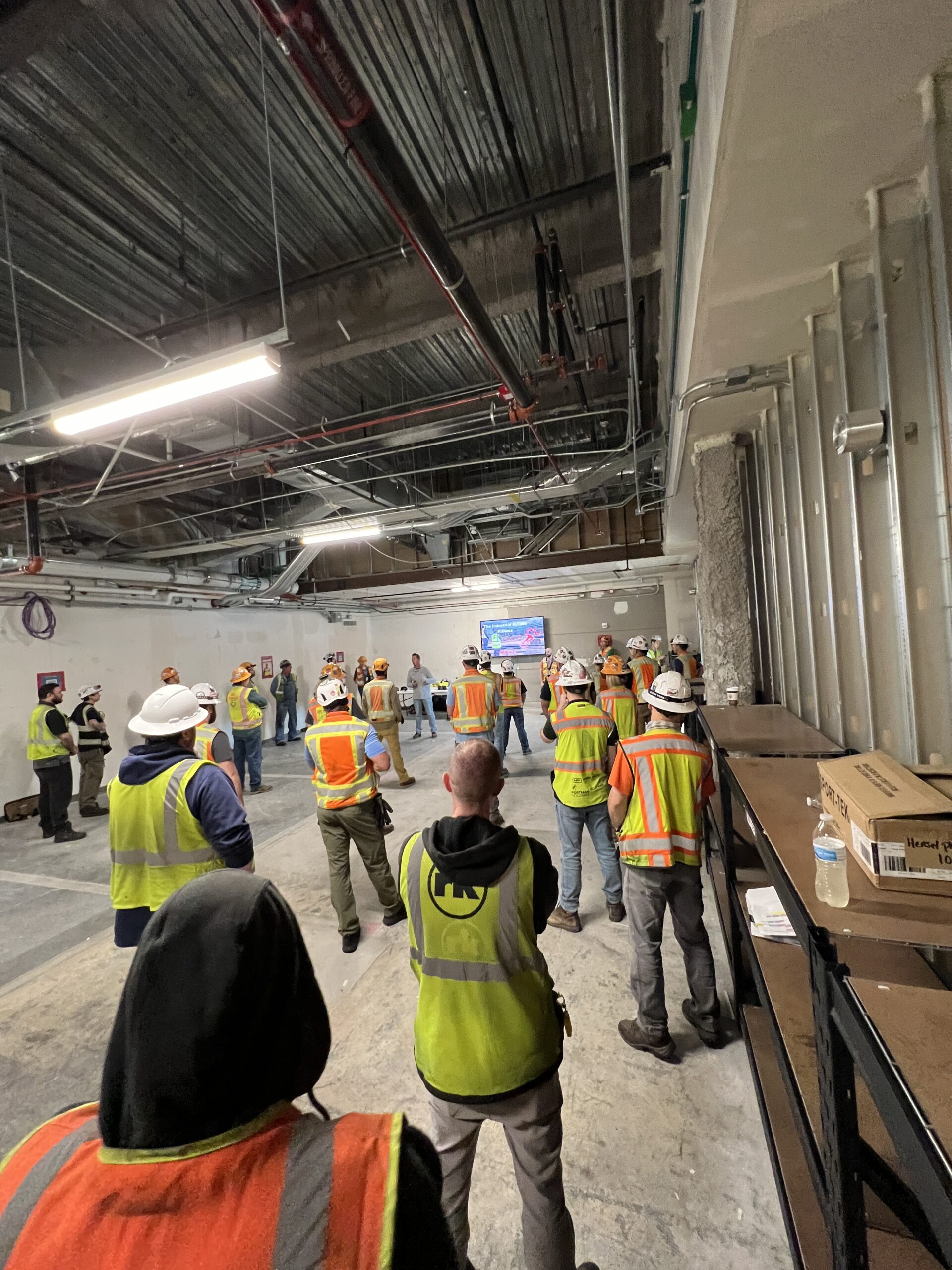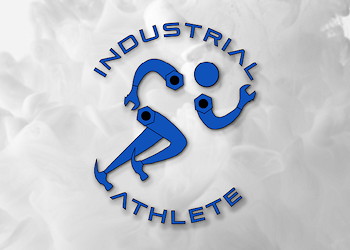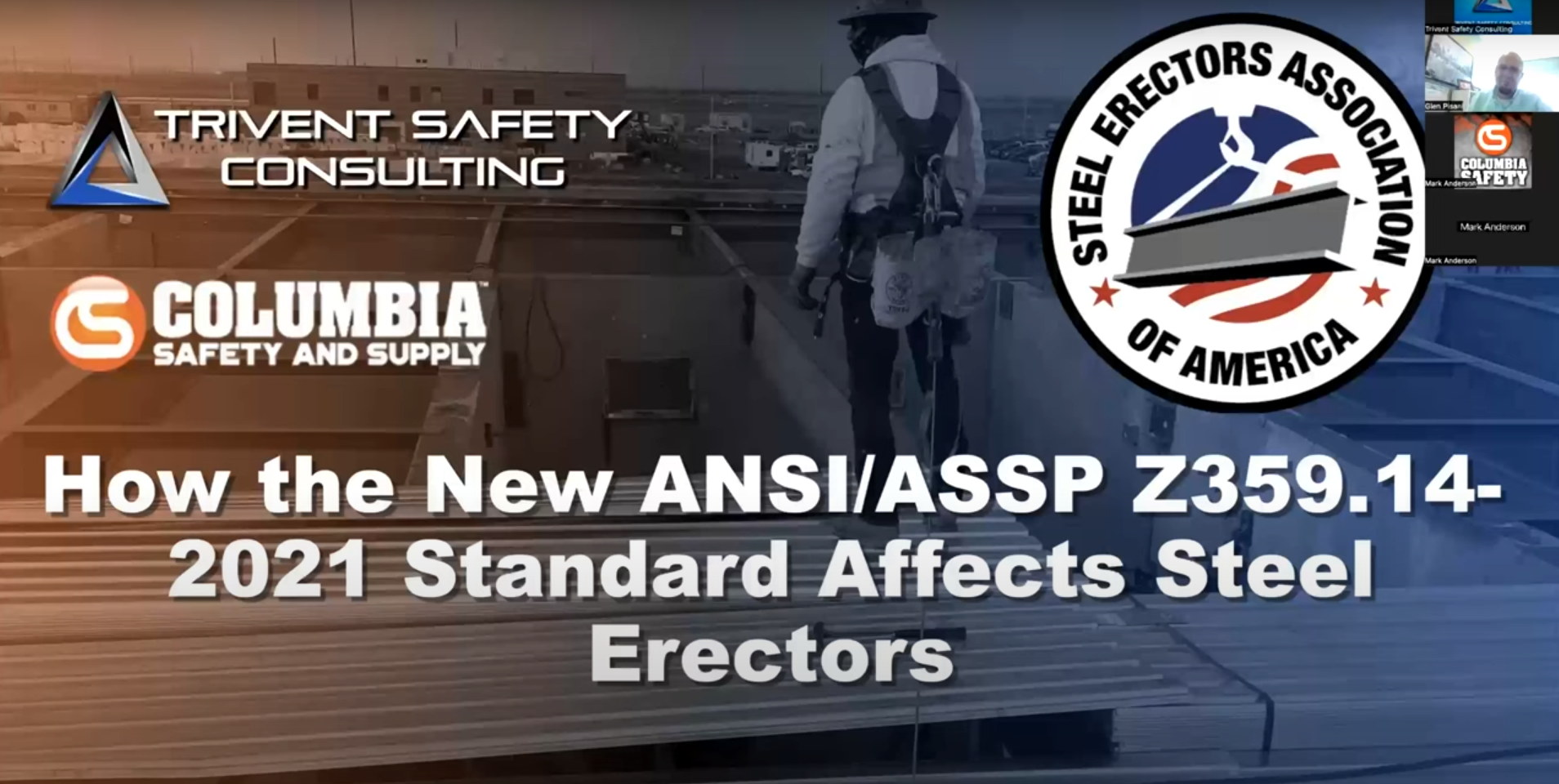If you’ve ever marveled at the impressive sight of a towering crane effortlessly maneuvering heavy loads, you might not be aware of the meticulous planning and coordination required behind the scenes.
Continue readingFall Protection Training at Trivent Safety Consulting’s World-Class Center in Wheat Ridge, Colorado
“we firmly believe in the power of hands-on training. Our fall protection courses feature practical exercises and simulations that allow participants to apply their theoretical knowledge in real-life scenarios.”
Continue readingExperience Excellence in Rigger & Signalperson Training at Trivent Safety’s World-Class Facility
If you’re looking for rigger and signalperson training that goes above and beyond, Trivent Safety’s world-class facility in Wheat Ridge, CO, is your destination.
Continue readingTaking Your Rigging Skills to the Next Level: The Trivent Master Rigger Course
Are you ready to elevate your rigging capabilities and become a master of the trade? Look no further, because we have just the course for you!
Introducing the Trivent Master Rigger Course – an exhilarating opportunity that will take your rigging skills to unprecedented heights. Whether you’re a seasoned professional or just starting out in the industry, this comprehensive training program is designed to push boundaries, expand knowledge, and transform even the most proficient rigger into an unstoppable force. Get ready to embark on a thrilling journey as we dive deep into advanced techniques, cutting-edge equipment, and unparalleled expertise. Buckle up and get ready – it’s time to level up your rigging game!
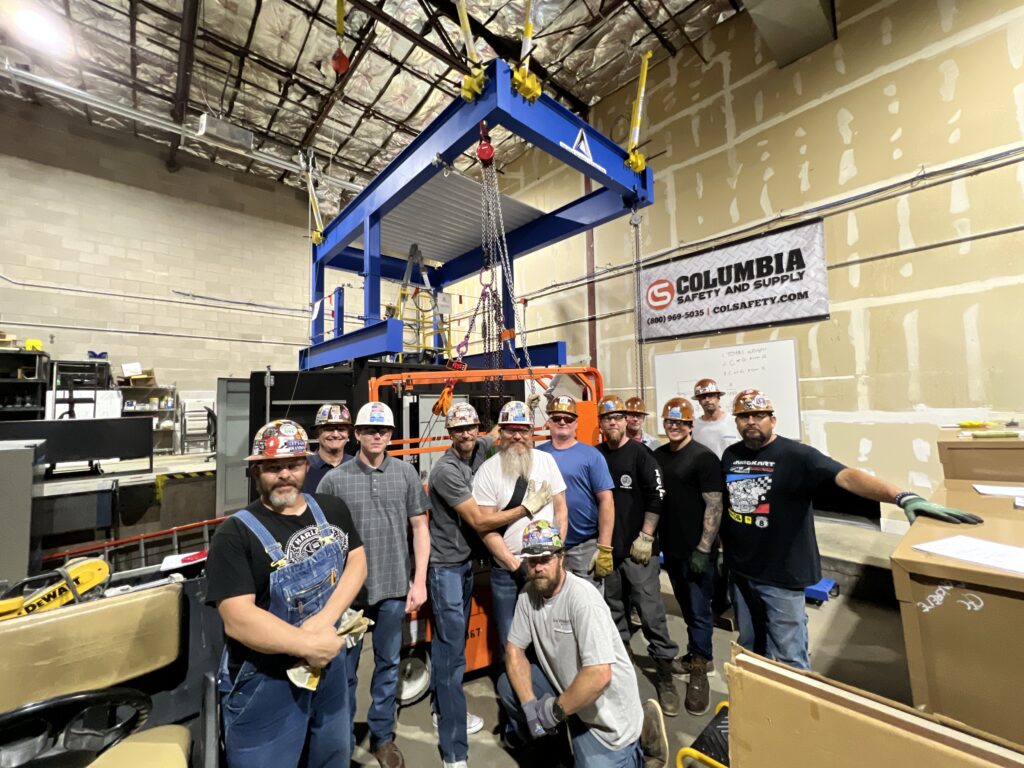
Introduction to the Trivent Master Rigger Course
The Trivent Master Rigger Course is an intensive, hands-on training program that covers all aspects of professional rigging. The course is designed for riggers who want to take their skills to the next level and become certified master riggers. The course includes classroom instruction and practical training on a variety of topics, including calculating sling tension, Load Weight Estimation, coefficients of friction and determining the center of gravity for asymmetrical loads. Students will also learn about the latest rigging equipment and how to use it properly. Upon completion of the course, students will be able to safely and efficiently rig for a variety of applications. Whether you’re looking to start your own rigging business or simply want to improve your rigging skills for your current job, the Trivent Master Rigger Course is the perfect choice.
What is Rigging?
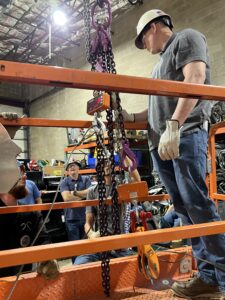 Rigging is the process of planning, selecting, and using complex slinging techniques to move material using cranes or hoists. It is a highly skilled trade that requires training and certification. Riggers are responsible for the safety of the workers and equipment they are using, as well as the load they are lifting. Rigging involves attaching loads to cranes or other lifting devices using various types of hardware, such as chains, ropes, pulleys, and blocks. A rigger must be able to calculate the weight of the load and the size and capacity of the crane or other lifting device being used. They must also know how to secure the load so that it does not displace while it is being lifted. Riggers must also be familiar with OSHA regulations and standards pertaining to rigging operations. They must be able to properly inspect all rigging equipment before each use and keep accurate records of all inspections.
Rigging is the process of planning, selecting, and using complex slinging techniques to move material using cranes or hoists. It is a highly skilled trade that requires training and certification. Riggers are responsible for the safety of the workers and equipment they are using, as well as the load they are lifting. Rigging involves attaching loads to cranes or other lifting devices using various types of hardware, such as chains, ropes, pulleys, and blocks. A rigger must be able to calculate the weight of the load and the size and capacity of the crane or other lifting device being used. They must also know how to secure the load so that it does not displace while it is being lifted. Riggers must also be familiar with OSHA regulations and standards pertaining to rigging operations. They must be able to properly inspect all rigging equipment before each use and keep accurate records of all inspections.
Benefits of Taking the Trivent Master Rigger Course
The Trivent Master Rigger Course is designed to take your rigging skills to the next level. This course will provide you with the knowledge and skills necessary to become a master rigger. You will learn how to safely and effectively rig loads for lifting, lowering, and moving them into position. In addition, you will learn how to inspect and maintain rigging equipment.
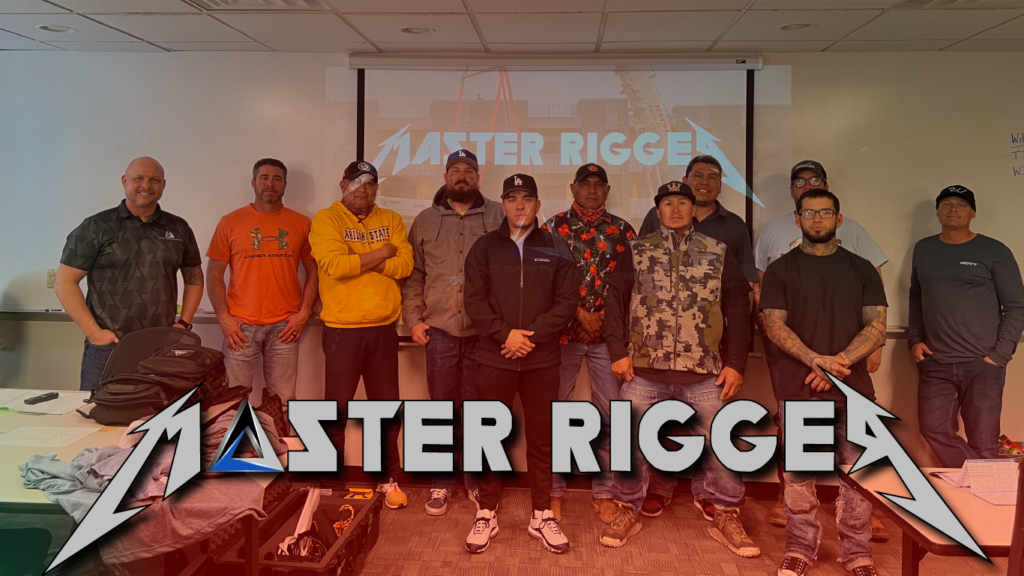
Upon completion of the Trivent Master Rigger Course, you will be able to:
- Safely and effectively rig loads for lifting, lowering, and moving them into position
- Inspect and maintain rigging equipment
- Understand the principles of load analysis and mechanical advantage
- Select appropriate rigging methods and techniques for specific tasks
- Calculate sling tensions and center of gravity locations
- Plan lift sequences
Topics Covered in the Course
This course covers a variety of topics that are essential for riggers who want to take their skills to the next level.
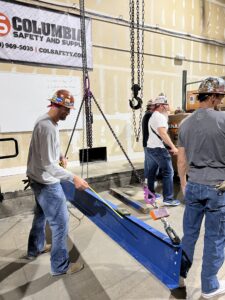 These topics include:
These topics include:
- Sling Types
- Sling Capacities
- Sling Inspections
- Hardware inspections
- Hardware Capacities
- Hitch Types
- Load Control
- Power Line Safety
- Crane / Hoist Dynamics
- Calculating Sling tensions
- Load Weight Estimation
- Block & Fairlead Loading Calculations
- Coefficients of Friction Calculations
- Load Factors & Weight Distribution Calculations
- Practical (Hands On) Applications for:
- Sling Tension Calculations
- Load Weight Estimation
By the end of the course, students will have a thorough understanding of these topics and will be able to apply them in real-world situations.
Prerequisites for Taking the Course
In order to take the Trivent Master Rigger Course, you must first take the Trivent Qualified Rigger & Signalperson training course.
Facilities and Instructors at Trivent
The Trivent Master Rigger Course is held at the Trivent training center in Wheatridge, Colorado. The course is taught by experienced riggers who have a wealth of knowledge and experience in the industry. Attendees will get a unique hands-on experience using the indoor Trivent training tower to test principals learned in the classroom in a controlled hands-on learning environment. The facility is equipped with all the necessary rigging equipment and supplies, and the instructors are knowledgeable and experienced in all aspects of rigging. The course is designed to give students a comprehensive understanding of rigging, from the basics to advanced techniques. Students will learn how to safely and effectively rig various types of equipment, including trusses, motors, pulleys, and winches. They will also learn about different types of rigging hardware and how to select the right type of hardware for each application.
Tips for Making the Most of the Course
If you’re looking to take your rigging skills to the next level, the Trivent Master Rigger Course is the perfect way to do it. Here are some tips for making the most of the course:
- Pay attention to the lectures and demonstrations.
This is a hands-on course, but there will also be plenty of opportunities to learn from the instructors. Make sure you take advantage of those moments. - Practice, practice, practice.
The more you can get your hands on the equipment and put what you’re learning into action, the better. - Ask questions.
No matter how much experience you have, there’s always more to learn. Don’t be afraid to raise your hand and ask questions when you’re unsure about something. - Get feedback from the instructors.
Throughout the course, you’ll have plenty of chances to get feedback from the instructors on your progress. Use that feedback to help improve your skills. - Stay focused and dedicated.
This is a challenging course, but if you stay focused and dedicated, you’ll come out of it a better rigger than when you started.
Conclusion
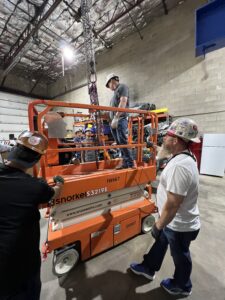 Learning to rig is an important step in taking your career to the next level. The Trivent Master Rigger Course offers a comprehensive and engaging training program for beginners and experienced riggers alike, providing the knowledge needed to stay safe while expanding rigging skills. With this course, you will be well-equipped with the tools necessary to make heavy things resist gravity!
Learning to rig is an important step in taking your career to the next level. The Trivent Master Rigger Course offers a comprehensive and engaging training program for beginners and experienced riggers alike, providing the knowledge needed to stay safe while expanding rigging skills. With this course, you will be well-equipped with the tools necessary to make heavy things resist gravity!
Blog Author: Bryan McClure
Unleashing the Inner Athlete: How the Industrial Athlete Program Can Transform Tradespersons’ Performance
Are you ready to tap into your untapped potential and unlock the powerhouse within? We’re about to embark on a journey that will revolutionize the way tradespersons approach their craft. Introducing the Industrial Athlete Program – an extraordinary initiative designed to transform your performance, elevate your skills, and unleash the inner athlete in you. Get ready to take charge of your physical and mental well-being like never before as we dive deep into this groundbreaking program that is set to redefine what it means to be a tradesperson. Whether you’re swinging hammers or operating heavy machinery, this blog post is packed with insights and strategies that will not only enhance your productivity but also empower you to achieve greatness in every aspect of your life. It’s time for a game-changing transformation – let’s unlock the inner athlete together!
The Four Pillars of the Industrial Athlete Program
1. Nutrition
2. Exercise & Stretching (Training)
3. Ergonomics
4. Behavioral Safety (Mindset)
The Industrial Athlete Program is based on the four pillars of training, recovery, nutrition, and mindset. Each pillar is essential to the success of the program and the overall health and performance of the tradesperson.
1. Nutrition: The first pillar of the Industrial Athlete Program is nutrition. This pillar focuses on providing the body with the nutrients it needs to perform at its best. The nutrition component of the program includes Meal Planning Guides that provide tradespeople with information on how to fuel their bodies for optimal performance.
2. Exercise & Stretching: The second pillar of the Industrial Athlete Program is Exercise & Stretching or training. This pillar focuses on developing the physical strength, power, and endurance needed to perform at a high level day in and day out. The training component of the program includes learning to stretch using dynamic and static stretching techniques as well as resistance band exercises to promote strength in the three major areas of concern for tradespersons, shoulders, knees & back.
3. Ergonomics: The third pillar of the Industrial Athlete Program is ergonomics. The ergonomics module educates the tradesman on hot to fit the work to the worker. This module is a continuation of the exercise module in the efforts to educate the workforce on methods to reduce Musculoskeletal disorders (MSD’s). The new technology segment introduces the attendees on equipment designed to assist reduce MSD’s.
4. Behavioral Safety: The fourth pillar of the Industrial Athlete Program is Behavioral Safety or mindset. This pillar focuses on helping tradespeople develop a positive mindset that will allow them to perform at their best mentally and emotionally. The Behavioral Safety module educates the tradesman on brain health. Construction is the number two occupation in the United States for suicide. This module educates the attendees on various coping and support strategies for themselves or coworkers that are going through tough times. The module also covers the differences in employees risk perception and how to view the world through the lens of risk assessment.
The four pillars of the Industrial Athlete Program provide a comprehensive approach to ensure workplace safety and health for workers in all industries. By focusing on these core areas employers can create a positive work environment that encourages productivity and reduces accidents. With proper planning and implementation, the program can help improve worker wellness while providing an effective tool to reduce costs associated with workplace injuries.
- Learn more by visiting our Industrial Athlete Training Course page.
Blog post Author: Bryan McClure
FREE Webinar Video: How the New ANSI/ASSP Z359.14-2021 Standard Affects Steel Erectors
Are you curious about the new ANSI/ASSP Z359.14-2021 standard and how it will affect end users and Steel Erection companies? Then watch this informative webinar on the topic!
This webinar provides an overview of the standard and how it differs from the previous version. Additionally, we discuss how end users and steel erection companies can benefit from its implementation, as well as what manufacturers are ahead of the curve.
So, whether you’re a safety professional, a company representative, or just someone who is interested in learning more about this topic, make sure you watch this informative webinar!
Speakers: Bryan McClure of Trivent Safety Consulting and Mark Anderson of Columbia Safety.
FREE Webinar Video:
The Herd Safety Phenomena

On a recent business trip to Vietnam to deliver some rigging training for a client, I got to witness firsthand the motorcycle chaos on the streets of Ho Chi Minh city. If you’ve never seen it, pull up a YouTube video of motorcycles in Ho Chi Minh city. When you first arrive and are immersed in this traffic, it is a white-knuckle experience. My commute every morning was thirty minutes of close calls between our car and the multitudes of motorbikes zooming around us, missing our bumper by a mere couple of inches. I think the hardest thing for me to wrap my head around, was the fact that there weren’t any traffic signs and very few discernable traffic patterns. It was a literal free for all with motorbikes driving the wrong way down sidewalks to get around cars. Yet I never saw one accident in the week I was there. When I talked to my driver, he told me that accidents were actually very rare. How could this be possible?
As safety professionals, we always want to have everything fit into our nice, neat little safety rules. If worker does X than eventually Y will happen. The problem is, most of us are jaded, we’ve seen folks, good people with children and families, get severely injured and even killed. When these things happen, it is very easy to default to be the Monday morning quarterback, “well if worker X would have just followed this rule then this would not have happened.” And the truth is, we are almost always right. If the employee follows all the rules and prioritizes his or her safety above all other things, then worker X does not get hurt 90% of the time. The problem is, this thinking is flawed. We are human, we do not run on simple if/then statements. We have the ability to reason and assign a temporary risk rating to every given situation. The problem with this is, humans make mistakes and the acceptable risk level is different for everyone.
Want proof? I am a second-generation Ironworker, since I was 15 years old, I was going to work sites with my father and walking steel. Granted my father never let me get above the first floor while I was younger and was always holding onto the back of my britches while walking right behind me. My whole career, there were very few beams that I wouldn’t walk across, no matter how high. I love heights, I loved the freedom of getting above all the noise and chaos so that it was just my connecting partner and myself having fun, doing good hard work. I am not fearless when it comes to heights though, quite to the contrary. If you ever drive by the ole McClure Clan house around Xmas, you’ll never see Xmas lights on the upper parts of our roof. Why you ask? Because I am scared to death to get on the edge of our steep roofs and put those lights out. Pretty funny huh? Big tough Ironworker wont even get on the edge of his roof to hang Xmas lights because he is afraid, he is going to roll off. If you ever meet me in person this will make more sense, you see, I am round and built to roll! It’s not the roofs height that scares me, it’s the situation and the different risk assessment I assigned to each situation.
The Herd Protects The Herd
So, if all humans have different risk assessments, what stops them from getting hurt when they also do not have rules and procedures in place to follow and keep them in line? From my experience, it’s the herd.
I recently was watching a Discovery channel show on elephants about how they protected each other. A key factor in a herd’s survival rate was the age and number of older matriarchs in the herd. In her article “What elephants can teach us about the importance of female leadership” Lesley Evans Ogdens says, “Matriarchs carry with them a trove of crucial information. They have a unique influence over group decision-making. And, like human leaders, the most successful may even possess certain personality traits.” Two major factors play into an elephant herds mortality rate, the age and life experiences of the matriarchs leading the herd, and the herds unwavering commitment to protect the weaker, less experienced members of the herd. Ed Yong describes this in his blog “Older elephants know the best anti-lion moves”. Ed says, “When lions hunt elephants, they usually target youngsters or females, and they almost always attack from behind. They circle round a straggler, jump onto its back and flanks (out of the way of the trunk), and drag it to the ground. They never go for a frontal assault, so elephants can thwart their attacks by bunching together. The calves go in the middle; the adults face outwards in a formidable defensive ring of tusks and trunks.
Herd Safety At Construction Sites
I’ve seen this same herd phenomena played out on construction sites. I’ve recently consulted to a group building the largest sport stadium in the US. The project team was concerned about having any injuries on such a high-profile project, so they would fly me in twice a month to conduct a site audit and deliver training to their employees. After reviewing all their policies and procedures I was astonished that they had such a good safety record. Their safety policies were very few when compared to some of my other clients on much smaller projects. But after spending time in the field with the employees, it was clear what was going on:
A. This project had attracted some of the best and most experienced construction workers from around the United States to come work on it.
B. Most of these workers traveled in their groups that they had always worked with, or their herd.
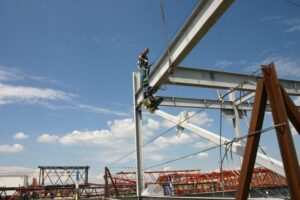
“In a time when we have fewer young people entering the trades than are retiring from it, it has never been more important to pass on those life experiences or we will find ourselves in a safety crisis.”
I would watch daily as they looked out for each other, older workers would tell the younger guys, “hey, there’s gonna be rain today, be careful walking that steel, it’s gonna be slick.” I watched as one more experienced worker, physically moved another from walking beside a large crawler crane, “those track pins can shear off, if they come out, they’ll go right through you.” The herd was protecting the herd.
Do not misunderstand me, I am not advocating for dispensing all the safety rules and policies. I firmly believe that every rule was put in place for a reason. It reminds me when I was a child going to the bathroom next to my father and reading the sticker on the urinal, “do not eat urinal cake”. I said “Dad, why would they put a sticker that says that?” His reply, “because son, every time you see one of these weird rules, that means that at some point in time, someone did something to require that rule.” Humans are weird, we all have different values and risk assessment values! In addition to implementing good safety policies and procedures, we also need to focus on training our people. But just training them is not good enough, they need training from folks who have life experiences that they can pass on to the younger generation to enhance the safety of the herd. In a time when we have fewer young people entering the trades than are retiring from it, it has never been more important to pass on those life experiences or we will find ourselves in a safety crisis. There are not enough rules or safety policies in the world to protect someone from hazards that they have never heard of, hazards that don’t fit neatly in our safety rules.
In an elephant herd the bigger more experienced elephants protect the smaller more inexperienced ones. In Vietnam my driver explained to me that if a car hits a motorbike, it is always considered the driver of the cars fault and the penalty for doing so is very stiff. I also witnessed whole families riding to school and work on the same motorbike, (my record was four family members on one bike). I witnessed many children obviously younger than 10 years old driving motorbikes on the streets. The correlation? The older /bigger members of the herd (the automobiles) were forced to look out for the younger, weaker members of the herd (the motorbikes) and experience was accumulated from a very early age driving the motorbikes, a recipe for success, the herd safety phenomena.
Author: Bryan McClure
Safety Guidelines for Exiting a MEWP Onto an Adjacent Structure
It’s a scenario that plays out hundreds of times every day across the United States, you need to access an upper elevation using a Mobile Elevated Work Platform but you do not know if it is legal or what the correct steps to ensure that you are legal are.
Continue readingThe Safety Dichotomy
Do you struggle to effectively deliver your safety message on site? Do you find yourself wondering why your message of going home the same way you showed up, not just for yourself, but your loved ones, does not seem to land home? Does it feel like you are just bouncing marbles off the wall sometimes?
Continue readingCOVID 19- A Novel Crisis
I am the husband to a wife that works long hours at an emergency room in a suburb of Denver. I am the safety consultant to many companies looking for answers and reassurances during this novel crisis.
Continue reading
